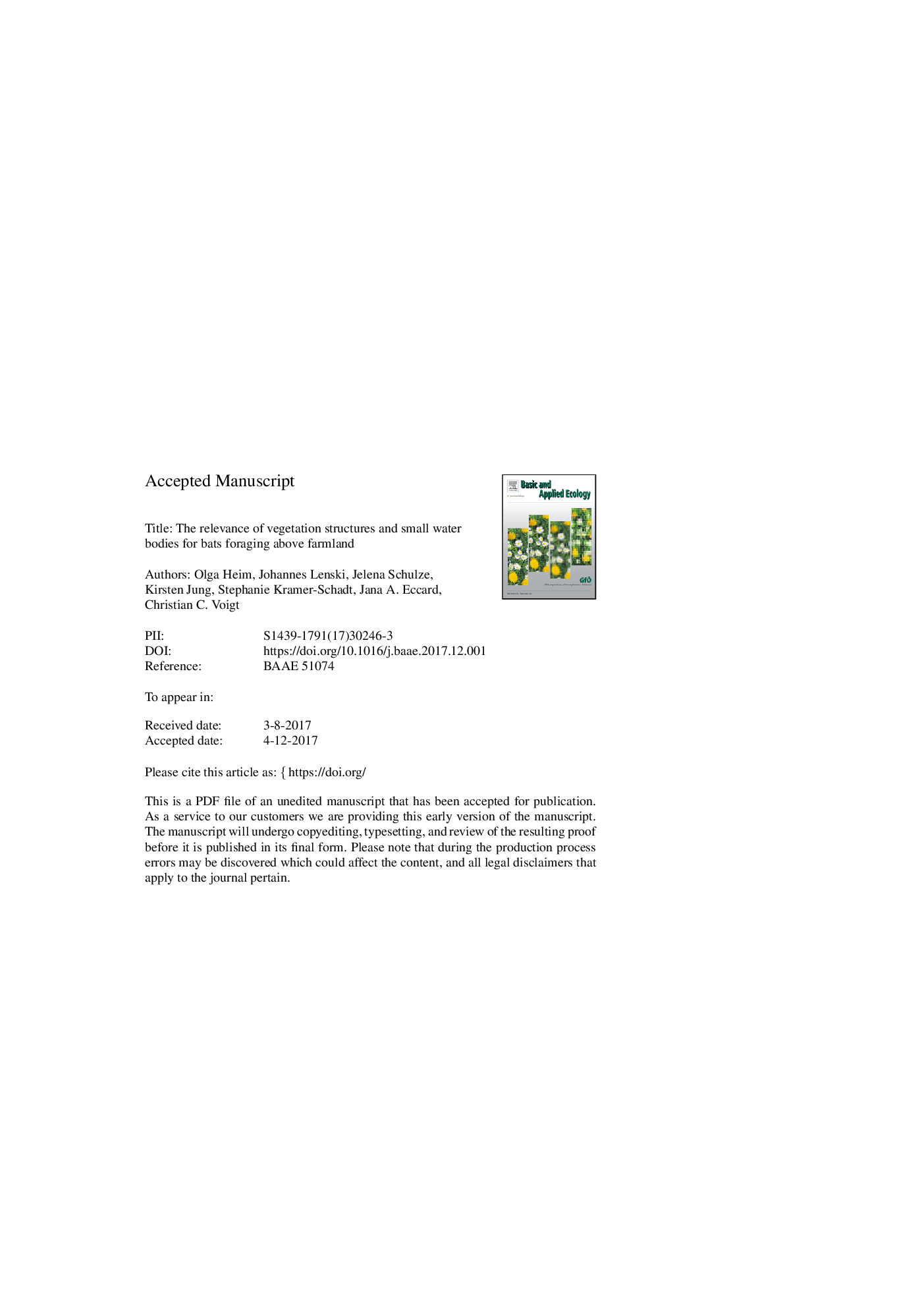| کد مقاله | کد نشریه | سال انتشار | مقاله انگلیسی | نسخه تمام متن |
|---|---|---|---|---|
| 8847023 | 1617854 | 2018 | 32 صفحه PDF | دانلود رایگان |
عنوان انگلیسی مقاله ISI
The relevance of vegetation structures and small water bodies for bats foraging above farmland
ترجمه فارسی عنوان
ارتباط ساختارهای گیاهی و آبهای کم آب برای خفاش ها که از زمین های کشاورزی استفاده می کنند
دانلود مقاله + سفارش ترجمه
دانلود مقاله ISI انگلیسی
رایگان برای ایرانیان
کلمات کلیدی
موضوعات مرتبط
علوم زیستی و بیوفناوری
علوم کشاورزی و بیولوژیک
علوم دامی و جانورشناسی
چکیده انگلیسی
Bats are known to forage and commute close to vegetation structures when moving across the agricultural matrix, but the role of isolated landscape elements in arable fields for bat activity is unknown. Therefore, we investigated the influence of small isolated ponds which lie within arable fields close to vegetation structures on the flight and foraging activity of bats. Additionally, we compared species-specific activity measures between forest edges and linear structures such as hedgerows. We repeatedly recorded bat activity using passive acoustic monitoring along 20 transects extending from the vegetation edge up to 200Â m into the arable field (hereafter: edge-field interface) with a small pond present at five transects per edge type (linear vs. forest). Using generalized linear mixed effect models, we analyzed the effects of edge type, pond presence and the season on species-specific flight and foraging activity within the edge-field interface. We found a higher flight activity of Nyctalus noctula and Pipistrellus pygmaeus above the arable field when a pond was present. Furthermore, Pipistrellus nathusii and Pipistrellus pipistrellus foraged more frequently at forest edges than at linear structures (e.g. hedgerows). Additionally, we found three major patterns of seasonal variation in the activity of bats along the edge-field interface. This study highlights the species-specific and dynamic use of forest and hedgerow or tree line edges by bats and their importance for different bat species in the agricultural landscape. Further, additional landscape elements such as small isolated ponds within arable fields might support the activity of bats above the open agricultural landscape, thereby facilitating agroecosystem functioning. Therefore, additional landscape elements within managed areas should be restored and protected against the conversion into arable land and better linked to surrounding landscape elements in order to efficiently support bats within the agroecosystem.
ناشر
Database: Elsevier - ScienceDirect (ساینس دایرکت)
Journal: Basic and Applied Ecology - Volume 27, March 2018, Pages 9-19
Journal: Basic and Applied Ecology - Volume 27, March 2018, Pages 9-19
نویسندگان
Olga Heim, Johannes Lenski, Jelena Schulze, Kirsten Jung, Stephanie Kramer-Schadt, Jana A. Eccard, Christian C. Voigt,
